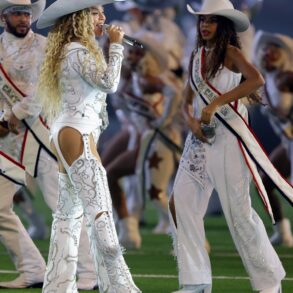Mastering the skill of watercolour painting is no easy task. But Nairobi-based artist Joyce Kuria is carving out a space for herself as a watercolourist.
Instead of the usual white paper, Kuria is doing things differently by painting on brown paper using black ink and white paint as her primary colours.
The mid-tone paper and monochrome colours allow for greater contrasts in the highlights and shadows of her subjects and make the illustrations more intriguing. Splashes of paint done with a toothbrush enhance the aesthetic effects or the sense of movement in the painting.
Read: Past and present meet in art show
Nostalgia is a prominent inspiration for Kuria, who grew up in Bungoma town in western Kenya and studied fine art and design at Kenyatta University.
Reminiscences of a happy childhood often appear in her work as children at play, in dress fashions from yesteryears or people in everyday activities.
The painting Mother and Son has a rural woman holding her young child while pedalling on a bicycle. Two boys with a large guitar balance on a bicycle in Days From Home.
The young adults in big sunglasses and 1970s bell-bottom pants in The Royal Light recall the studio photography images of that era.
Pictures of old-school boombox players, the Safari Rally from the olden days or vintage cars continue the retrospective reviews that Kuria enjoys portraying.
“That’s what I like to recreate – the fashion from the old times or what we did as kids.”
Read: Dinka elegance presented in mixed-medium collage
A happy misfortune led to collaborative artworks with painter Daisy Buyanzi. The pair met in 2018 at a mentorship programme in StudioSoku organised by artists Njogu Kuria and Jeffie Magina.
“During one of the assignments, there were not enough canvases so we had to pair up with a partner. That’s how it started and we thought, this could be a thing,” she said.
For their collaborative artworks, they chose the pen name Wet Paint instead of signing their individual names. Their Afro-futurism portraits capture the strength and resilience of the traditional African women in cultural dress, juxtaposed with images of weapons or modern transport.
Created in Kuria’s typically limited colour choices, the mixed media art on canvas incorporates ink, watercolours and cut up newsprint.
It is hard to tell that the Wet Paint series is created by two people as their styles complement each other very well. “We both do everything,” said Kuria, about their dual creative process. Their partnership in paintings aims to provide an alternative way of understanding African culture by merging it with futuristic themes.
Read: AKINYEMI: Artfully served stories grow powerful brands
There is an enticing freedom in the way Kuria portrays some of her female forms. The realistic portraiture series of contemporary African women, with youth and beauty on their side, is attractive. But the ones I find more interesting are pictures of plus-size women exhibiting great confidence in their bodies and a sense of flair, whether they are dancing, posing or doing handstands.
Clearly not afraid to experiment with different themes and media, Kuria’s body of works includes whimsical street scenes, wildlife watercolours, murals and street art. “I used to hang around the BSQ studio back when they were at the Railways Museum,” said Kuria.
“They are graffiti artists and so I got into making murals.” A passion for Japanese anime and comic books inspired her exploration of manga drawings. It is a style of illustration that she plans to continue in her future artworks.
Despite working as a full-time artist since 2018, she still finds the arts ecosystem less favourable to women. “As a female artist you have to prove yourself more because I think people think this is a career for men,” said Kuria. Whilst a male creative might get a hassle-free entry during an artists’ call-out, Kuria encounters more stringent enquiries when she applies, a situation she attributes to her gender.
Nevertheless, she continues undaunted, enjoying the freedom offered by a career in art and the ability to “work according to my own rules.” When she is not painting pictures Kuria is creating other artsy work such as hand-painted merchandise or teaching art classes to adults and children.
This post was originally published on this site be sure to check out more of their content.





